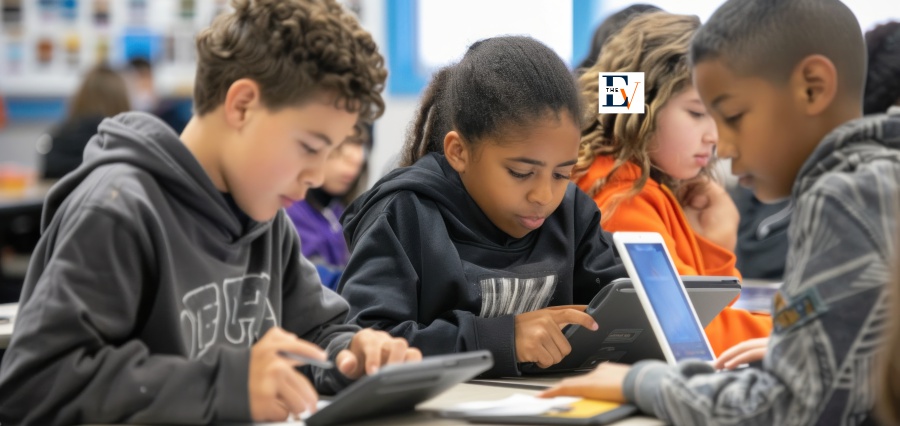Every child is unique. Nature has blessed everyone with different qualities by birth. In society, acquiring knowledge is everyone’s birthright. When a child is growing up, he/she starts getting information about many things from surroundings. Brain activities and the learning process start at an early age. School is the best platform for the round development of a kid. Teachers are the basic building block in society. Their contribution to developing a child into a good, successful human being is always remarkable. There is a set teaching-learning process in the school.
School or Gurukool is established to nurture the pupils. The pupils admitted to the schools are from different backgrounds, mentalities, intelligence, abilities, and skills. It is the teacher’s responsibility to make sure that every student understands the concept and learns with active participation irrespective of background. Hence inclusive teaching-learning method came into the picture.
These methods of teaching, learning, and assessment are slightly different for different age groups. These methods are known as inclusive methods, which include every student in the class and motivate them to actively participate irrespective of their background, learning modality, and ability. Inclusive practice ensures that all children receive equal opportunities, despite who they are. Inclusion gives children what they want and need. Creating an inclusive classroom where everyone feels valued is incredibly powerful.
Teacher’s Role
A teacher’s educational background, upbringing, personality, likes and dislikes, and opinions all affect your identity and therefore, subconsciously, the way you teach. The teacher’s behaviour, personality, identity, posture, gestures, and the way he/she acts in the class all these points impact a student’s development. Teachers are role models for a student. You might not consider yourself to be the greatest teacher in the world, but you can be the greatest teacher in a child’s life. The one they always remember, who had the significant impact on them—by including them and making them feel safe and valued.
A teacher has to assess teaching methods, models, and resources. A teacher must understand the Subject, its difficulty level, application, need of the topic, etc. Mentality, family background, and the mindset of the teacher play a vital role while conducting or attending to the students. A teacher should work, think, and apply his/her mind to a teaching method before class. No two children are the same, so it’s important to remember this when planning the lessons.
A teacher must be wise enough to recognize, each child’s behavioural pattern, family background, habits, mentality, intellectual and emotional quotient, strengths and weaknesses, etc. With this knowledge, a teacher can develop an approach toward students. This inclusive approach also recognizes the benefits that student diversity can bring to the overall learning experience. One has to take care while delivering or conducting any activity in the class or outside the class, that students must enjoy learning.
Inclusive Teaching – Learning Components
Inclusive education takes into account the different needs of all students to create an inclusive learning environment. This can be done by modifying the teaching methods, materials, and resources used in the classroom and creating a supportive school culture. Inclusive education can benefit all students, not just those with special needs. The inclusive education components are mainly divided into five parts viz. physical, cognitive, academic, social, and emotional.
Learning is not a competition. It is a never-ending process, a journey.
Pathways to Create an Inclusive Learning Environment in the Class
There aren’t any particular rules of inclusive practice. The inclusive practice aims to ensure that all students can flourish in education, despite any challenges they face in their daily life. Different students will benefit from different learning techniques depending on their needs.
This can be done by creating visual aids and learning tools that are accessible to all students, regardless of their abilities. It is also important to ensure that the classroom environment is welcoming and supportive so that all students feel comfortable participating in class activities.
Another way to implement inclusive education is by creating a culture of inclusion within the school community. This can be done by educating staff, parents, and students about the benefits of inclusive education and providing training and support for those working with students with special needs. It is also essential to provide opportunities for all students to interact with one another, so they can learn from each other and build friendships.
Inclusive Education Methods
To make sure this is the case, you should use a variety of teaching methods and be flexible. For example:
- Working in pairs, groups, and individually
- Working on computers and out of books
- Making posters and other creative materials
- Reading books
- Story writing
- Role play
- Sporting activities
- Musical activities
- Games
- Healthy competition
- Class in the nature
- Field Visit
- Arts and crafts
- Different activities at festivals.
By being flexible and using a variety of teaching methods, we can give each student an equal opportunity to use their strengths and succeed. Additionally, it will help them to improve things that they find more challenging. A class becomes like a family. Students are a very great source of energy.
The Outcome of Inclusive Learning Practices –
- Students learn about diversity and equality
- Empathy and sensitivity to people who are different from themselves are developed in the students
- Improves friendships, confidence, and self-image
- Students become ready for problem-solving, teamwork, and collaboration in their lessons
- Promoting parental confidence that their children are being accepted
- Encourages positive relationships
- Student gets prepared for life challenges
- Students can reach their full potential
- Creates a culture of acceptance and understanding in society
- It is beneficial to the complete school community
- Increases academic outcomes, self-esteem, social skills, and confidence among Students
- Helps to reduce bullying and harassment
Inclusive education benefits all students by providing them with an equal opportunity to learn and grow. It also helps to break down barriers between different groups of people and allows everyone to feel welcomed and valued. Overall, inclusive education has many benefits that all students can enjoy. It is important to remember that inclusive education is not just for students with special needs but for all students. All students can benefit from being in an inclusive learning environment.
About the Author:
Prof Sanjivani Apte is a technocrat with great ability to solve any complex business problems and deep passion of exponential growth in the industry.
Apart from this, as a Senior Professor, counsellor and social worker, she has received many awards and recognition.
Next story: https://theeducationview.com/changing-paradigms-of-engineering-education/






